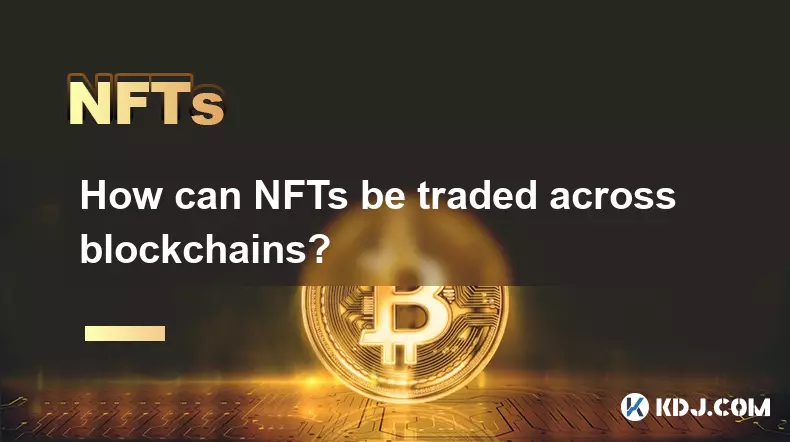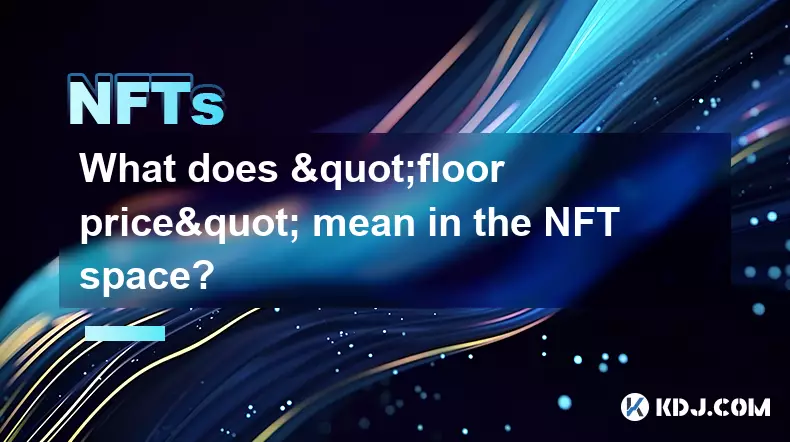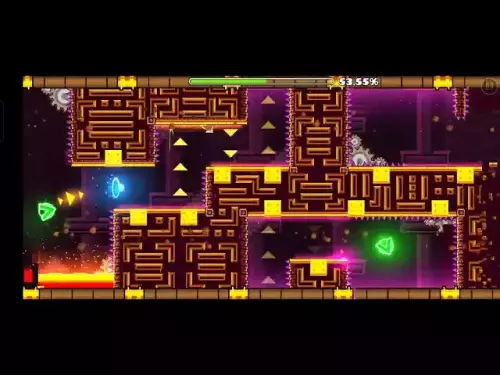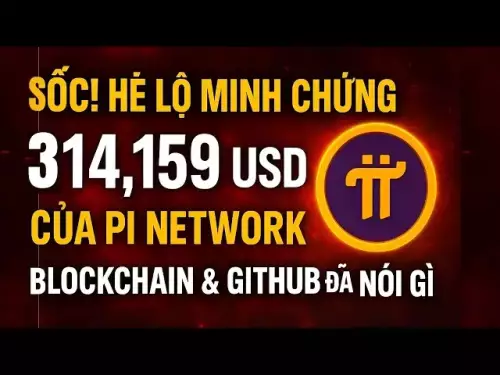-
 bitcoin
bitcoin $109547.008142 USD
0.04% -
 ethereum
ethereum $4011.838726 USD
-0.05% -
 tether
tether $1.000402 USD
-0.01% -
 xrp
xrp $2.798606 USD
0.88% -
 bnb
bnb $970.877944 USD
1.39% -
 solana
solana $202.237275 USD
-0.95% -
 usd-coin
usd-coin $0.999673 USD
0.00% -
 dogecoin
dogecoin $0.229294 USD
-1.15% -
 tron
tron $0.336370 USD
-0.45% -
 cardano
cardano $0.777260 USD
-1.66% -
 hyperliquid
hyperliquid $45.503019 USD
1.73% -
 ethena-usde
ethena-usde $1.000362 USD
0.01% -
 chainlink
chainlink $20.785303 USD
-1.10% -
 avalanche
avalanche $28.755822 USD
-0.11% -
 stellar
stellar $0.358303 USD
-0.48%
What's the difference between NFTs and cryptocurrencies?
NFTs verify digital ownership through blockchain, enabling unique assets like art and collectibles to be bought, sold, and traded with proven authenticity and scarcity.
Sep 20, 2025 at 06:36 pm

Digital Ownership and Value Representation
1. NFTs, or Non-Fungible Tokens, represent unique digital assets on a blockchain. Each token is distinct and cannot be exchanged on a one-to-one basis like traditional currencies. Their uniqueness makes them ideal for representing ownership of digital art, collectibles, virtual real estate, and in-game items.
2. Cryptocurrencies such as Bitcoin and Ethereum are fungible, meaning each unit holds the same value and can be exchanged interchangeably. One Bitcoin is always equal to another Bitcoin, just like how one dollar bill equals another dollar bill. This fungibility supports their use as mediums of exchange and stores of value.
3. The underlying technology for both NFTs and cryptocurrencies is blockchain, but they serve different functions within the ecosystem. While cryptocurrencies aim to function as decentralized money, NFTs focus on proving authenticity and ownership of specific digital or physical items.
4. Smart contracts power most NFTs, especially those built on Ethereum using standards like ERC-721 or ERC-1155. These contracts embed metadata that defines the asset’s properties, creator, and ownership history. In contrast, cryptocurrency transactions typically involve simple transfers without embedded metadata about the purpose of the funds.
Market Dynamics and Use Cases
1. The market for NFTs has grown rapidly around digital creativity and exclusivity. Artists, musicians, and brands tokenize original works to sell directly to collectors, often retaining royalty rights through programmable smart contracts. This creates new revenue models outside traditional gatekeepers.
2. Cryptocurrency markets operate more like financial instruments, with trading driven by speculation, adoption rates, macroeconomic factors, and technological upgrades. They are used for payments, remittances, decentralized finance (DeFi), and as hedges against inflation in certain economies.
3. Liquidity differs significantly between the two. Major cryptocurrencies like Bitcoin and Ethereum have high trading volumes and global exchanges supporting instant trades. NFTs, being non-fungible, lack standardized pricing and often require specialized platforms like OpenSea or Blur, where sales may take longer and depend heavily on perceived rarity or cultural relevance.
4. Price determination in NFTs relies on subjective value—scarcity, artist reputation, community engagement, and trends play crucial roles. Cryptocurrency valuation, while also influenced by sentiment, tends to follow more quantifiable metrics such as hash rate, network activity, supply caps, and development progress.
Technical Structure and Interoperability
1. NFTs are typically created through a process called minting, where a digital file is linked to a blockchain token. This process records immutable details such as creation date, authorship, and edition number. Once minted, the NFT can be bought, sold, or traded across compatible platforms.
2. Cryptocurrencies are usually pre-mined or mined over time according to protocol rules. Their distribution follows consensus mechanisms like Proof of Work or Proof of Stake, ensuring secure validation of transactions and resistance to double-spending.
3. Despite differences, NFTs and cryptocurrencies coexist within the same ecosystems. For example, purchasing an NFT often requires paying in cryptocurrency, commonly Ether (ETH). Wallets like MetaMask support both types of assets, allowing users to manage fungible tokens and unique collectibles from a single interface.
4. Some advanced applications combine both elements. In decentralized gaming, players might earn cryptocurrency rewards while owning NFT-based characters or equipment. Similarly, DeFi protocols have begun integrating NFTs as collateral or membership passes, expanding utility beyond pure collectibility.
NFTs establish verifiable scarcity in digital spaces, transforming how we perceive ownership online.
Cryptocurrencies enable peer-to-peer value transfer without reliance on centralized institutions.
Frequently Asked Questions
Can an NFT be copied?Yes, the digital file associated with an NFT—such as an image or video—can be copied or downloaded by anyone. However, the NFT itself, which contains the verified ownership record on the blockchain, cannot be duplicated. The copy lacks the authenticated provenance and original creator signature embedded in the token.
Are all NFTs built on Ethereum?No, while Ethereum hosts the majority of NFTs due to its robust smart contract capabilities, other blockchains like Solana, Polygon, Binance Smart Chain, and Tezos also support NFT creation. Each chain offers different trade-offs in terms of transaction speed, cost, and environmental impact.
Do cryptocurrencies have intrinsic value?The value of cryptocurrencies is derived from network trust, utility, scarcity, and demand rather than physical backing. Unlike commodities such as gold, their worth emerges from collective agreement on their usefulness for transactions, savings, or access to services within digital economies.
Can NFTs be used as collateral for loans?Yes, in decentralized finance (DeFi) platforms, some NFTs are accepted as collateral for borrowing cryptocurrency. Lenders assess risk based on the NFT’s historical sale price, rarity, and market demand. Protocols like NFTfi facilitate peer-to-peer lending secured by digital collectibles.
Disclaimer:info@kdj.com
The information provided is not trading advice. kdj.com does not assume any responsibility for any investments made based on the information provided in this article. Cryptocurrencies are highly volatile and it is highly recommended that you invest with caution after thorough research!
If you believe that the content used on this website infringes your copyright, please contact us immediately (info@kdj.com) and we will delete it promptly.
- Whale Movements, XPL Token, and Hyperliquid: Decoding the Crypto Tides
- 2025-09-28 14:25:14
- BullZilla Roars: Presales, Ripple, and TRON in the Crypto Jungle
- 2025-09-28 14:25:14
- Nation-State Bitcoin Adoption: Samson Mow's Perspective on the 'Suddenly' Moment
- 2025-09-28 14:45:12
- XRP Price, WallStreetBets, and Rally Prediction: A New Era?
- 2025-09-28 14:45:12
- Pi Network, Sign Protocol, and the Binance Listing Buzz: What's the Deal?
- 2025-09-28 14:30:01
- BTC, HODLers, and a Potential Bull Run: A New Yorker's Take
- 2025-09-28 14:30:01
Related knowledge

How can I determine the authenticity of an NFT project?
Sep 23,2025 at 05:18pm
Understanding the Project Team and Their Background1. Research the identities of the team members behind the NFT project. Verified social media profil...

What's the difference between NFTs and traditional collectibles?
Sep 19,2025 at 12:55pm
Digital Ownership and Provenance1. NFTs are built on blockchain technology, which ensures transparent and immutable records of ownership. Every transa...

How can NFTs be traded across blockchains?
Sep 19,2025 at 12:00pm
Understanding Cross-Chain NFT Trading1. Non-fungible tokens (NFTs) are digital assets that represent ownership of unique items on a blockchain. Origin...

How is NFT rarity calculated?
Sep 18,2025 at 07:54pm
Understanding NFT Rarity Metrics1. NFT rarity is determined by analyzing the uniqueness of individual traits within a collection. Each NFT typically c...

What does "floor price" mean in the NFT space?
Sep 22,2025 at 06:36am
Floor Price: A Core Metric in the NFT Marketplace1. The term floor price refers to the lowest current asking price for any item within a specific NFT ...

How do NFTs help content creators?
Sep 18,2025 at 08:00am
NFTs Empower Creators with Ownership and Monetization1. NFTs provide content creators with verifiable ownership of their digital works, ensuring authe...

How can I determine the authenticity of an NFT project?
Sep 23,2025 at 05:18pm
Understanding the Project Team and Their Background1. Research the identities of the team members behind the NFT project. Verified social media profil...

What's the difference between NFTs and traditional collectibles?
Sep 19,2025 at 12:55pm
Digital Ownership and Provenance1. NFTs are built on blockchain technology, which ensures transparent and immutable records of ownership. Every transa...

How can NFTs be traded across blockchains?
Sep 19,2025 at 12:00pm
Understanding Cross-Chain NFT Trading1. Non-fungible tokens (NFTs) are digital assets that represent ownership of unique items on a blockchain. Origin...

How is NFT rarity calculated?
Sep 18,2025 at 07:54pm
Understanding NFT Rarity Metrics1. NFT rarity is determined by analyzing the uniqueness of individual traits within a collection. Each NFT typically c...

What does "floor price" mean in the NFT space?
Sep 22,2025 at 06:36am
Floor Price: A Core Metric in the NFT Marketplace1. The term floor price refers to the lowest current asking price for any item within a specific NFT ...

How do NFTs help content creators?
Sep 18,2025 at 08:00am
NFTs Empower Creators with Ownership and Monetization1. NFTs provide content creators with verifiable ownership of their digital works, ensuring authe...
See all articles










































































